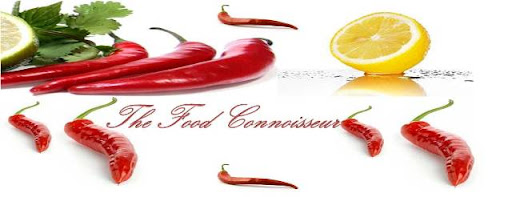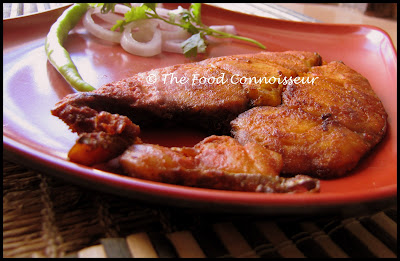Check out details in the links below:
http://en.wikipedia.org/wiki/Garcinia_cambogia
http://kodampuli.com/index.html
It is actually a fruit that grows in moist forests. It has a distinct sour taste that enhances the flavor of curries. This is how the ripe fruit looks like apparently:


The green fruit shown in the picture above is a young version, It will turn yellow when ripe. Once fully ripe, fruits are collected, cut in half, de-seeded and are sun-dried for a day. The sun-dried fruit halves are smoked till black, and are rubbed with a mixture of salt and oil before transferring to earthenware pots and tightly sealed. These will stay fresh for years. Before use, wash the pieces under running water quickly to remove any dust accumulated from the drying and smoking process, then soak these for 10 minutes in water.
This is how the Kodumpuli looks like. This is rarely used in our part of Kerala (North Malabar region). We use the tamarind that everyone uses for Sambar and other curries for our fish and prawn curries as well. However, most of the Kerala restaurants in Chennai serve only the south Kerala style fish curry with Kodumpuli. I liked the taste and from then on, have been having this dying urge to make it. The biggest challenge was to procure this in Chennai. I have not seen it in any supermarkets in Chennai.
So the last time someone went to Kerala, I tasked them with bringing me some. Then the usual procrastination that so aptly describes me happened and these shriveled black puli pieces were left untouched for over a year.
Last week was a Seafood overdose at home. So I used this opportunity to make fish curry this style.
Ingredients:
- Fish (Sear/Pomfret) - 10 pieces
- Kodumpuli - 2 pieces (soaked in warm water)
- Shallots - 15-20, thinly sliced (do not substitute)
- Green Chillies - 2 slit lengthwise
- Coconut oil - 2 tbsp
- Red Chilly powder - 1+2 tsp (for marinating and the curry)
- Turmeric Powder - 1/4+1/4 tsp (for marinating and the curry)
- Corriander Powder - 1 tsp
- Mustard Seeds - 1 tsp
- Fenugreek Seeds - 1 tsp
- Curry Leaves - 2-3 sprigs
- Ginger - 2 inch piece finely chopped
- Garlic - 5 cloves finely chopped
- Ginger Garlic Paste - 1 tsp
- Thin Coconut milk - 2 cups
- Thick Coconut milk - 1 cup
- Salt to taste
Method:
- Marinate the fish with salt, 1 tsp chilly powder and 1/4 tsp turmeric powder and set aside for 2 hours.
- Soak kodumpuli in 4 tbsp warm water for 1 hour.
- Heat coconut oil in a pan.
- Splutter mustard seeds.
- Splutter fenugreek seeds and curry leaves.
- Add chopped shallots and green chilly and fry well.
- Add the ginger garlic paste and fry till the raw smell disappears.
- Add the chopped ginger and garlic pieces.
- Add the chilly powder, turmeric powder, corriander powder and salt and fry well.
- Add the kodumpuli, fish pieces and thin coconut milk and cook till the fish is done.
- When the fish is fully cooked, add the thick coconut milk and allow it to boil.
- Remove and serve hot with rice.
Note: Usually, fish curry is made in a traditional earthenware called "Meen Chatti". I've not seen people use the spoon once the fish is added for fear of breaking them. They usually hold on to the sides of the pan and twirl it around twice or thrice for the curry to mix well. Fish curry in the Meen Chatti can be kept for days together and infact it increases its taste with each passing day.














